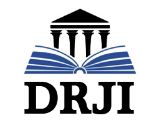2716-5132 (Media Cetak)
2723-0783 (Media online)
Dharmawangsa International Journal of The Social Sciences, Education and Humanities is a journal published by the Research Institute of Dharawangsa University, Medan. This journal is published periodically three times a year, namely in March, July and November. Articles published in this journal are articles that examine the fields of social science, law, economics, sociology, education, and Humanities. both in the form of conceptual, research findings, books and biographies of figures. The languages used in this journal are English and Arabic. Without reducing scientific weight, this journal accepts written contributions that have never been published in other print media. All articles that enter will go through a peer-review process after fulfilling the requirements according to scientific article writing guidelines.

Vol 6, No 3 (2025): Social Sciences, Education and Humanities
Table of Contents
Cover Vol. 6 No. 3 NOVEMBER 2025
|
Cover of Journal
|
|
Table Of Contents Vol. 6 No. 3 NOVEMBER 2025
|
Table of Contents
|
|
Articles Vol. 6 No. 3 NOVEMBER 2025
|
Hernanda Priambudi, Aan Asphianto, Ahmad Fauzi
|
376 – 394
|
|
Annisa Yuniar Fakhiriyah, Iskandar Yusuf
|
395-404
|
|
Jihan Noor Annisa, Iskandar Yusuf
|
405-414
|
|
Salma Hijriah, Iskandar Yusuf
|
415-424
|
|
Fitriah Fitriah, Ferry Fathurokhman, Mohamad Noor Fajar Al Arif
|
425-443
|
|
Endang Maulana, Mas Iman Kusnandar, Firdaus Firdaus
|
444-467
|
|
Dedy Sergius Nono, Nikson Tameno, Olivia L E. Tomasowa
|
468-474
|
|
Khofifah Aulia Nisa, Muhyi Mohas, Mohamad Noor Fajar Al Arif
|
475-482
|
|
Kerlima Hutagaol, Anugrah Ramadha Pratama, Fazry Alwy Sirodz, Purnama Ramdan, Angga Febriadi, Tiodorus Situmorang
|
483-489
|
|
Purnama Novyangga, Randyr Eka Tumilar, Rangga Saputra, M. Farid Ardiansyah Aris Saputra
|
490-496
|
|
Widi Mulia Endar Kusuma, Fanni Hanifa, Hidayani Hidayani
|
497-506
|
|
Teuku Muhammad Syauqi, Sharfina Sharfina
|
507-516
|
|
Nicholas Effendi, Hanindyalaila Pienrasmi, M Denu Poyo
|
517-525
|
|
Kiki Rizkia, Lina Nurul Izza, Maryam Syarah Mardiah, Selma Selviani, Kurniasari Kurniasari, Ai Siti Hamidah, Andi Fitria Anggraeni
|
526-539
|
|
Desna Sari Ka
|
540-553
|
|
Flora Elsita Pardosi, Dicky Sanjaya, Amelya Katrina Naibaho
|
554-560
|
|
Oktaviani Ike Setyarini, Cika Pransiska, Ristanti Ristanti, Eryfia Candika Iswandaru, Ratih Nurma Sari, Fanni Hanifa, Milka Anggraini
|
561-576
|
|
Analysis of Village Resilience Based on the 2024 Village Development Index in Bunga Raya Subdistrict
Hana Dallilah Khonsa, Taryono Taryono, Asri Dwi Jovanka, Tasya Nofa, Nabila Cantika Wadani, Nazwa Azura Yasmin
|
577-587
|
|
Faidatul Makiyah, Danial Danial
|
588-600
|
|
Hasanawi Hasanawi, Farhan Farhan
|
601-613
|
|
Augustinus Balo
|
614-626
|
|
Della Novita Sari, Melani Noviantori Ramadhan, Farraz Yuni Syafitri, Wiwi Jupiani, Misdawita Misdawita
|
627-641
|
|
Taufik Farhansyah, Noning Verawati, Budhi Waskito
|
642-647
|
|
Saurma MGP Siahaan, Mega Ulva Sari Sihombing, Rachel Mia Lorenza Lumban Toruan, Dasmauli Purba
|
648-660
|
|
Rehulina Rehulina
|
661-672
|
|
Rina Melati Sitompul, Elwi Danil, Mahmud Mulyadi, Mohammad Ekaputra, Rosmalinda Rosmalinda
|
673-682
|
|
Dzulfikar Mochammad Zain, Zainal Abidin, Fajar Hariyanto
|
683-693
|
|
Olivia Sri Simanullang, Kristiani Della Manurung, Elly Fadilla Siregar, Zuhro Tamanna Daulay, Flores Tanjung
|
694-697
|
|
Childa Amelia, Putri Agus Febriyani, Fenny Valianda Amelia Ramadhan, Agus Santi BR Ginting, Wati Wati, Yuni Nur Amelia, Fitriyana Fitriyana, Muliana Yulianingsih
|
698-712
|
|
Paltiman Lumban Gaol
|
713-729
|
|
Sefa Martinesya, Wirda Garizahaq, Fuadi Brylian Yanri, Lizy Marchelina Butarbutar
|
730-740
|
|
Roslatul Hasanah, Norma Ita Sholichah
|
741-754
|
|
Syakirah Athiyyah, Taryono Taryono, Naila Septa Ridhoni, Melani Noviantori Ramadhan, Della Novita Sari, Klara Marsyakila, Aprillina Aprillina
|
755-763
|
|
Evabius Saputra
|
764-783
|
|
Alfina Cristanti, Bunga Novelya Kusuma, Annisa Fujiyanti, Ahdanisa Fadhlih, Arga Satrio Prabowo
|
784-793
|
|
Marcellinus Manek Nubatonis
|
794-804
|
|
Ade Putra Juni Cahyani, Minarni A. Dethan, Yohanes Demu
|
805-817
|
|
Anggun Anisyabilla, Sadiman Sadiman, Yoga Triwijayanti
|
818-828
|
|
Zamakhsyari bin Hasballah Thaib
|
829 -847
|
|
Salma Hanani, Fanni Hanifa, Magdalena Tri Putri
|
848 - 857
|
|
Helima Hutagaol, Akhmad Faruq, Irvon Dasrah, Rachmaiyanti Rachmaiyanti
|
858-868
|
|
Mohamad Kevin, Diaz Muhammad Noory, Fathia Alida Safina, Muhamad Dimas, Evi Afiati
|
869 - 875
|

11.jpg)
















